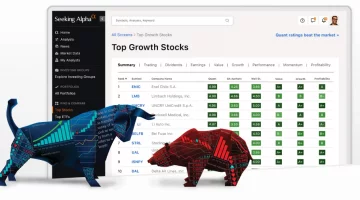Blockchain Breakdown: Navigating the World of Cryptocurrency
Blockchain technology and cryptocurrencies have taken the world by storm, revolutionising how we conduct transactions, store data, and interact with digital assets. In this comprehensive article, we delve into the intricacies of blockchain technology, explore the fascinating world of cryptocurrencies, and provide insights into navigating this dynamic landscape.
1. Understanding Blockchain Technology
- The Basics: Blockchain is a decentralised and distributed ledger that records and verifies transactions across multiple computers. It operates on a consensus mechanism and ensures data transparency, security, and immutability.
- Key Features: Blockchain technology is characterised by decentralisation, cryptographic security, transparency, and smart contracts. It eliminates intermediaries and provides a trusted environment for peer-to-peer transactions.
2. Exploring Cryptocurrencies
- Cryptocurrencies Defined: Cryptocurrencies are digital or virtual currencies utilising cryptography for secure transactions. They operate on blockchain networks and enable peer-to-peer transfers of value.
- Major Cryptocurrencies: Bitcoin, Ethereum, Ripple, and Litecoin are among the most prominent cryptocurrencies, each with its unique features, use cases, and market capitalisation.
- Utility Tokens vs Security Tokens: Cryptocurrencies can be categorised into utility tokens, which provide access to a specific product or service, and security tokens, which represent ownership or shares in an underlying asset or company.
3. Benefits of Blockchain Technology and Cryptocurrencies
- Decentralization and Trust: Blockchain eliminates the need for intermediaries, fostering trust among participants and reducing reliance on centralised systems.
- Enhanced Security: Cryptocurrencies employ advanced cryptographic techniques, making transactions secure and protecting user data.
- Efficient and Transparent Transactions: Blockchain technology enables fast and transparent transactions, with real-time settlement and audit trails.
- Financial Inclusion: Cryptocurrencies have the potential to provide financial services to the unbanked and underbanked populations, bridging the gap between individuals and traditional financial systems.
4. Risks and Challenges
- Volatility: Cryptocurrencies are known for their price volatility, posing risks for investors and hindering mainstream adoption.
- Regulatory Uncertainty: Cryptocurrencies' regulatory landscape is still evolving, with different jurisdictions adopting various approaches. Regulatory changes can impact the cryptocurrency market and investor confidence.
- Security Concerns: While blockchain technology is secure, vulnerabilities exist in exchanges, wallets, and smart contracts. Implementing robust security measures and practising caution is vital.
5. Navigating the Cryptocurrency Landscape
- Education and Research: Understand the fundamentals of blockchain technology and the specific cryptocurrencies you are interested in. Stay updated with industry news, market trends, and technological advancements.
- Wallets and Exchanges: Choose reputable cryptocurrency wallets and exchanges prioritising security and user protection. Understand the different types of wallets and select the one that aligns with your needs.
- Risk Management: Develop a risk management strategy that includes diversifying your portfolio, setting investment goals, and establishing entry and exit points. If you are new to the game, you should start with a crypto demo account.
- Regulatory Compliance: Familiarize yourself with your jurisdiction's regulatory requirements and tax obligations to ensure compliance.
Crypto vs Stock Trading
Crypto and stock trading are distinct forms of trading that differ in several key aspects. Let's explore the differences between crypto trading and stock trading:
1. Market Accessibility:
Crypto Trading: Cryptocurrencies operate in a decentralised market that is accessible 24/7. Anyone with an internet connection can participate in crypto trading, and numerous cryptocurrency exchanges are available globally.
Stock Trading: Stock trading occurs on centralised stock exchanges with specific trading hours. Investors typically must go through a brokerage firm to access stock markets and execute trades.
2. Regulatory Environment:
Crypto Trading: Cryptocurrencies operate in a relatively less regulated environment than traditional stock markets. Regulations for cryptocurrencies vary across jurisdictions, and there is an ongoing development in legal frameworks and oversight.
Stock Trading: Stock trading is subject to comprehensive regulations and oversight by financial authorities. Stock exchanges adhere to strict regulatory requirements, including disclosure norms, reporting standards, and investor protection measures.
3. Volatility and Liquidity:
Crypto Trading: Cryptocurrencies are known for their high volatility, with significant price fluctuations occurring in relatively short periods. This volatility can provide profit opportunities but also carries higher risks. Liquidity in the cryptocurrency market can vary significantly depending on the specific cryptocurrency being traded.
Stock Trading: Stocks, on average, tend to be less volatile than cryptocurrencies, although individual stocks can still experience significant price movements. The liquidity of stocks is generally higher, especially for large-cap stocks, as they are actively traded on established stock exchanges.
4. Asset Characteristics:
Crypto Trading: Cryptocurrencies are digital assets built on blockchain technology. They often have a limited supply, with some cryptocurrencies having a predetermined maximum supply. Market demand, adoption, technological advancements, and regulatory developments drive cryptocurrencies' value.
Stock Trading: Stocks represent ownership in a publicly traded company. The value of stocks is influenced by factors such as the company's financial performance, industry trends, management decisions, and macroeconomic conditions.
5. Investment Analysis:
Crypto Trading: Crypto traders often rely on technical analysis, chart patterns, and market sentiment to make trading decisions. Fundamental analysis, although applicable to some extent, may have limitations due to the relatively nascent stage of the cryptocurrency market.
Stock Trading: Stock traders utilise a combination of fundamental analysis, which involves analysing financial statements, earnings reports, industry trends, and company-specific factors, and technical analysis, which focuses on price patterns and market indicators, to make informed investment decisions.
6. Market Maturity and Adoption:
Crypto Trading: Cryptocurrencies are a relatively new asset class, and the market is still evolving. While there has been significant growth and increasing adoption, the cryptocurrency market is subject to rapid changes, technological advancements, and shifting investor sentiment.
Stock Trading: Stock markets have a long history and are well-established, with mature regulatory frameworks, standardised reporting requirements, and widespread institutional participation. Stock markets have a broader base of participants and a higher level of mainstream acceptance.
In conclusion, crypto trading and stock trading differ in market accessibility, regulatory environment, volatility, liquidity, asset characteristics, investment analysis methods, and market maturity. Understanding these differences is crucial for investors looking to engage in either form of trading and tailoring their strategies accordingly.
Conclusion
Blockchain technology and cryptocurrencies have ushered in a new era of digital innovation, promising increased security, transparency, and transaction efficiency. Understanding the intricacies of blockchain and cryptocurrencies is essential for navigating this rapidly evolving landscape.
As you embark on your journey in the world of cryptocurrencies, remember to approach it with caution, conduct thorough research, and implement robust security measures. Stay informed, continuously learn, and adapt to the changing dynamics of the cryptocurrency market.
While challenges and uncertainties exist, the transformative potential of blockchain technology and cryptocurrencies cannot be ignored. Embrace the opportunities they present, and explore the myriad possibilities they offer
More to Read:
Previous Posts:








